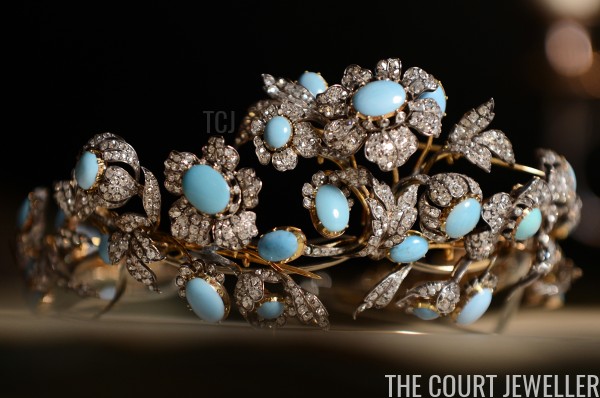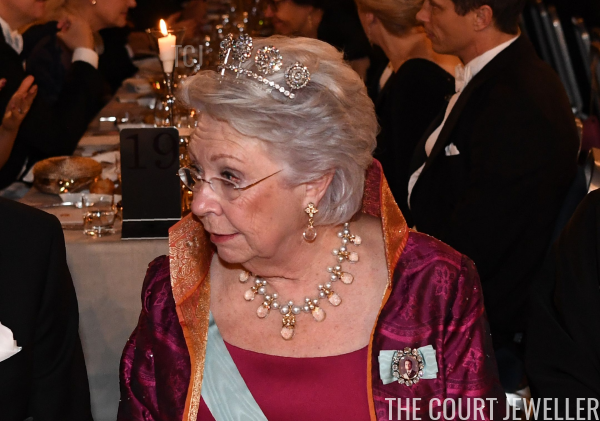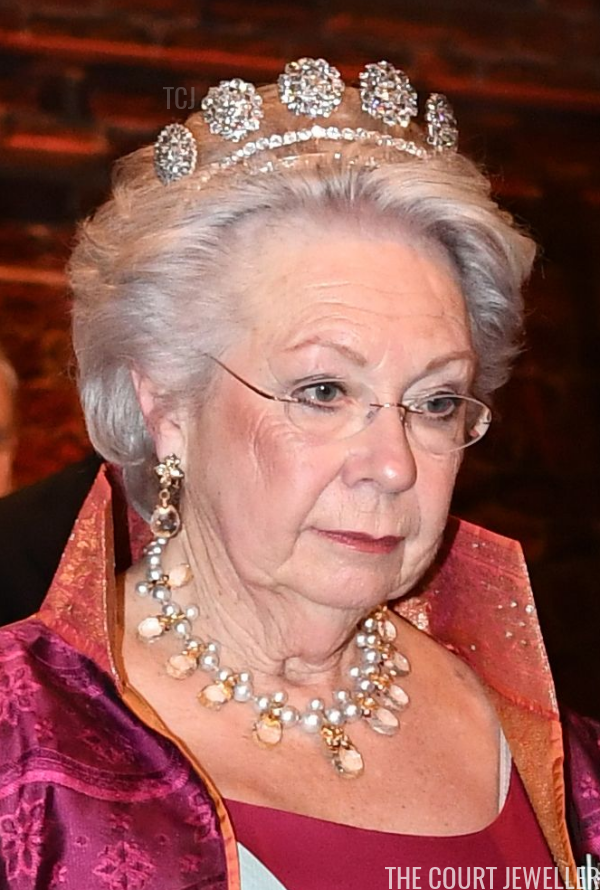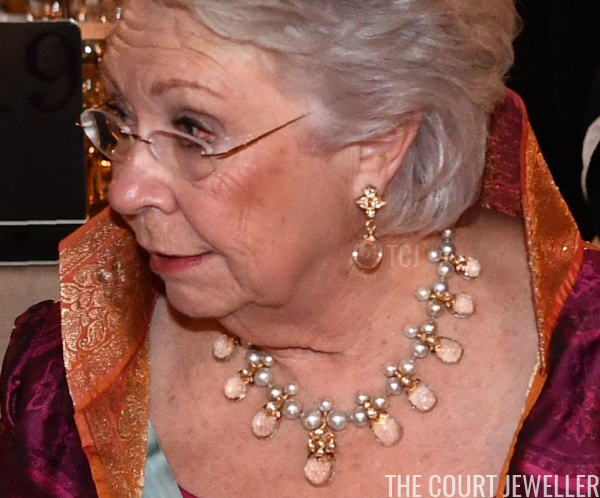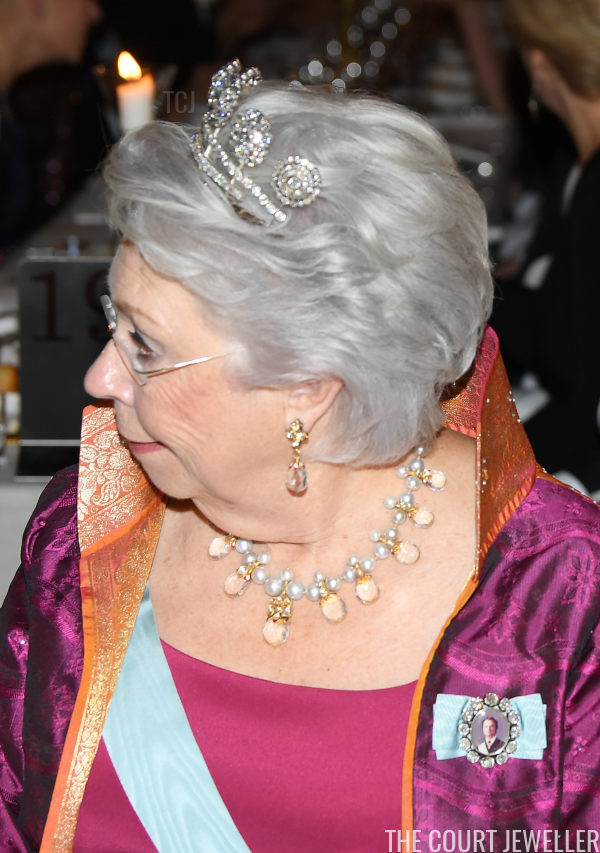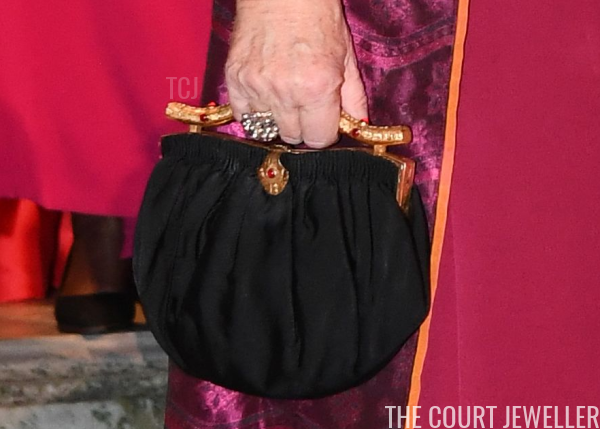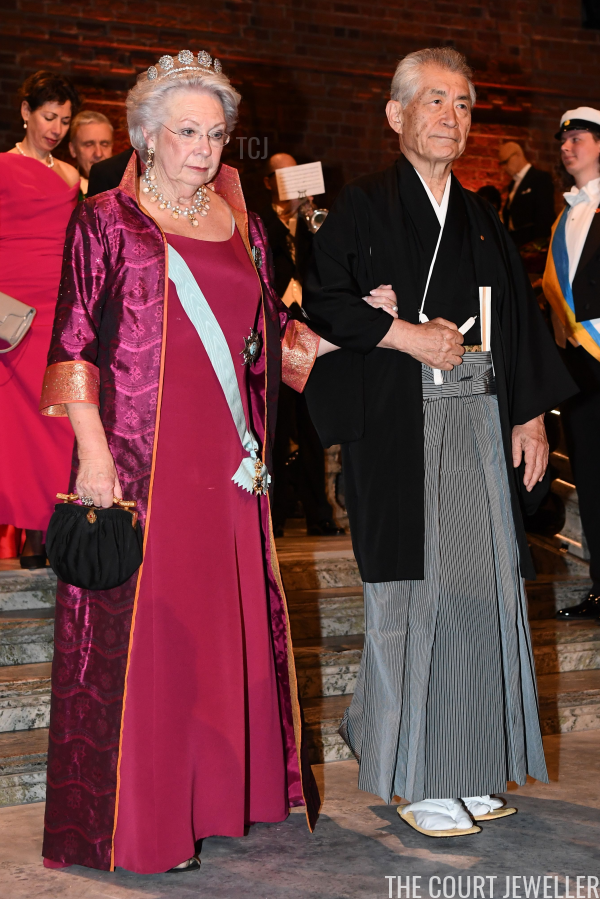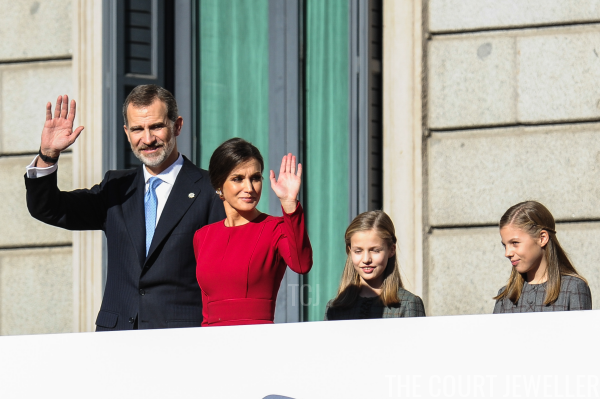 |
| Juan Naharro Gimenez/Getty Images |
On Thursday, the Spanish royal family gathered in Madrid to mark a very important milestone: the 40th anniversary of the nation’s constitution.
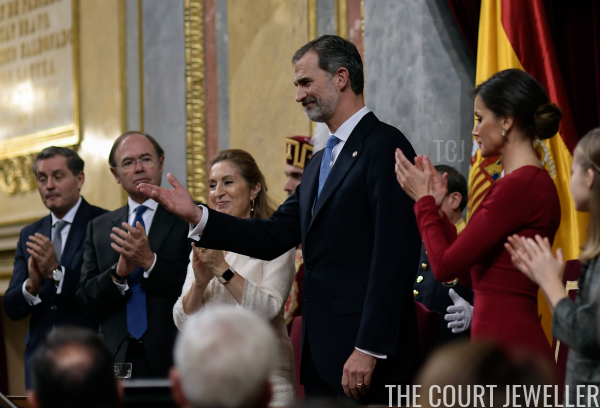 |
| OSCAR DEL POZO/AFP/Getty Images |
King Felipe and Queen Letizia marked the anniversary in parliament alongside Spain’s prime minister, the president of the nation’s congress, and other dignitaries.
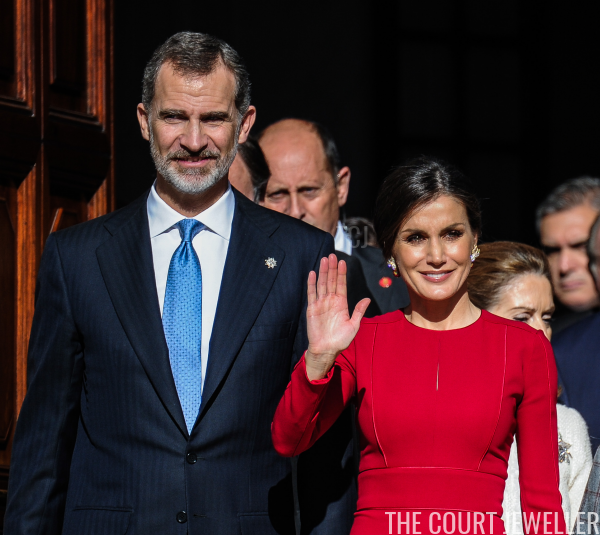 |
| Juan Naharro Gimenez/Getty Images |
For the celebrations, Letizia dressed in bright red, one of Spain’s national colors. Born in Asturias during the military dictatorship of Francisco Franco, Letizia Ortiz Rocasolano was six years old when the nation voted overwhelmingly to adopt its current constitution. Felipe, who was born a year before his father was designated as Franco’s heir, was ten years old when the constitution was approved by the Spanish people. In 1986, when he turned eighteen, Felipe appeared in parliament to swear his allegiance to the constitution, a requirement for him to officially become heir to the throne.
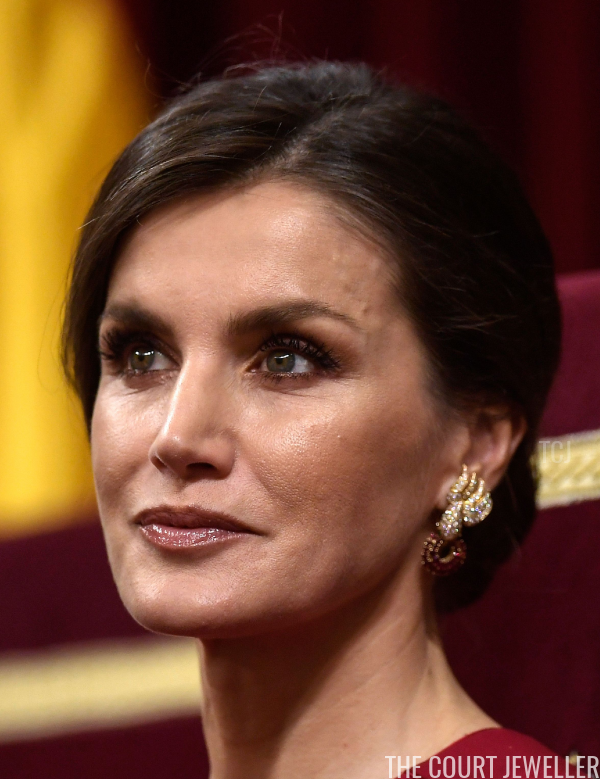 |
| OSCAR DEL POZO/AFP/Getty Images |
For Thursday’s ceremonies, which were held on the anniversary of the public referendum, Letizia wore a pair of symbolic earrings. They feature a diamond dove (a symbol of peace) holding a ruby wreath (a symbol of honor and victory). A bejeweled representation of peaceful victory is certainly appropriate for the anniversary of a transition to democracy. (And a fortieth anniversary, of course, is also a ruby jubilee!)
Intriguingly, though, the earrings have a less-than-democratic history: they were a gift from the Saudi royal family to Letizia’s mother-in-law, Queen Sofia. They came as part of a set that also includes a matching necklace. Letizia has made a pair of high profile appearances in the earrings previously. She wore them at the start of a state visit to Japan in April 2017, and later that same year, she wore them for a visit to parliament during the British state visit.
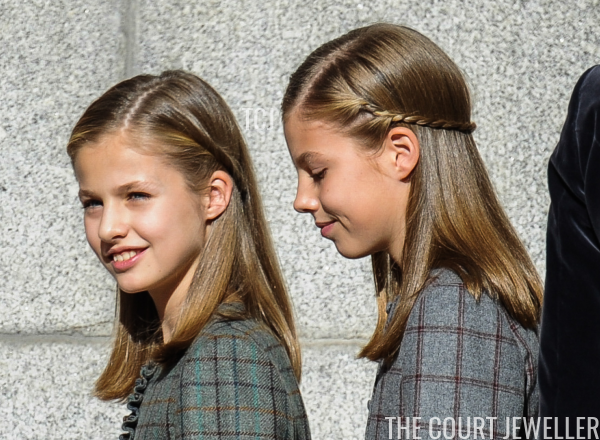 |
| Juan Naharro Gimenez/Getty Images |
Felipe and Letizia’s daughters, the Princess of Asturias and Infanta Sofia, were also present for the ceremonies at parliament.
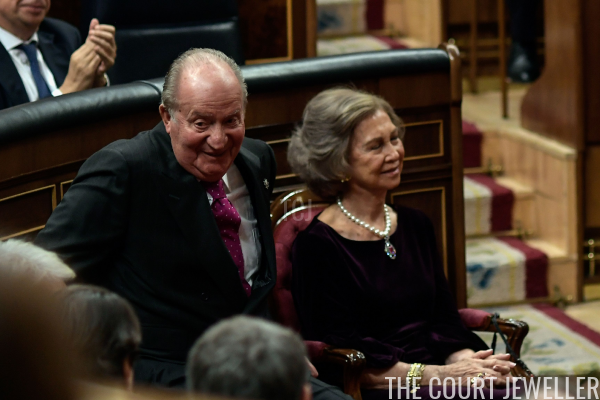 |
| OSCAR DEL POZO/AFP/Getty Images |
As were two of the most pivotal royal figures from 1978: King Felipe’s parents, King Juan Carlos and Queen Sofia.
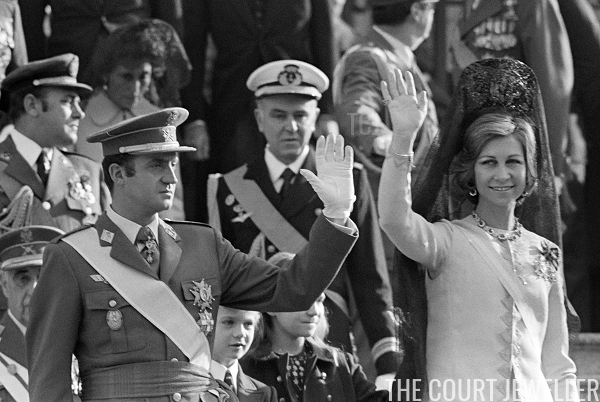 |
| King Juan Carlos (with the future King Felipe peeking out from beneath his arm) and Queen Sofia of Spain on the day of his religious enthronement ceremony in Madrid, November 1975 (AFP/Getty Images) |
When Juan Carlos inherited control of Spain from Franco in 1975, he could easily have continued to exercise the kind of dictatorial power that Franco had held for four decades. But he didn’t. Instead, he helped facilitate a transition from dictatorship to democracy, transforming Spain into a modern constitutional democracy. Both Juan Carlos and Sofia knew they needed to be practical about their new roles — both had grown up amid plenty of royal turmoil, watching their Spanish and Greek relatives deal with the challenges of meshing monarchy with the modern world. (Sofia’s brother, King Constantine II of Greece, was dethroned permanently in 1973, barely two years before Juan Carlos succeeded to the Spanish throne.)
Juan Carlos’s father, the Count of Barcelona, had been a strong advocate for constitutional monarchy, and his son helped to establish a democratic system that continues in Spain to this day. Juan Carlos’s reign wasn’t always sunny or popular, and there were real problems of corruption often lurking just beneath the surface. But Thursday’s ceremony in parliament honored a decision that is surely one of the most important parts of his legacy.
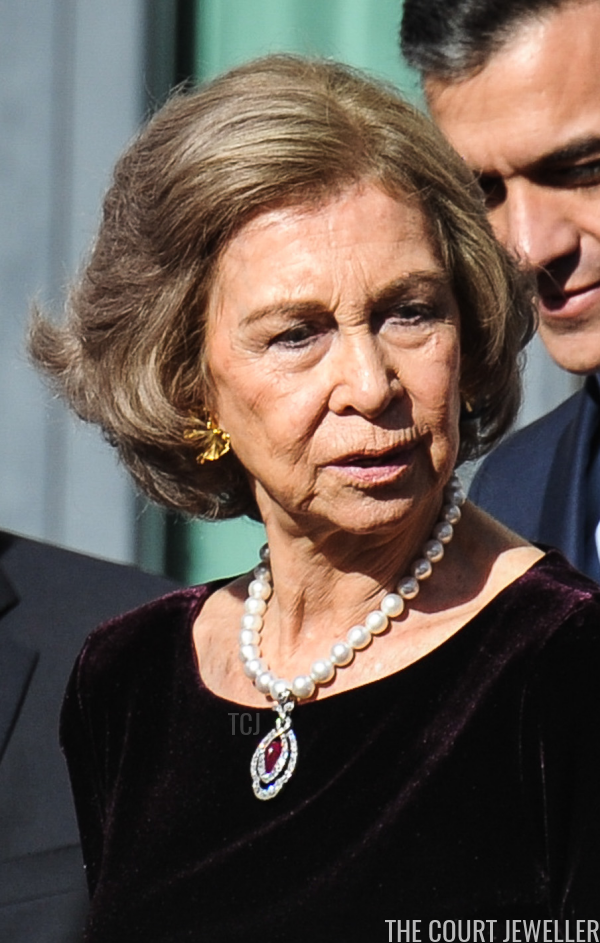 |
| Juan Naharro Gimenez/Getty Images |
Like her daughter-in-law, Queen Sofia chose jewels in Spain’s national colors for this day of commemorations. With her trademark gold earrings and bracelets, she also wore her pearl necklace with its modern diamond and ruby pendant. She inherited the pendant from her mother, Queen Friederike of Greece. (Intriguingly, Friederike was not exactly a proponent of democracy.)
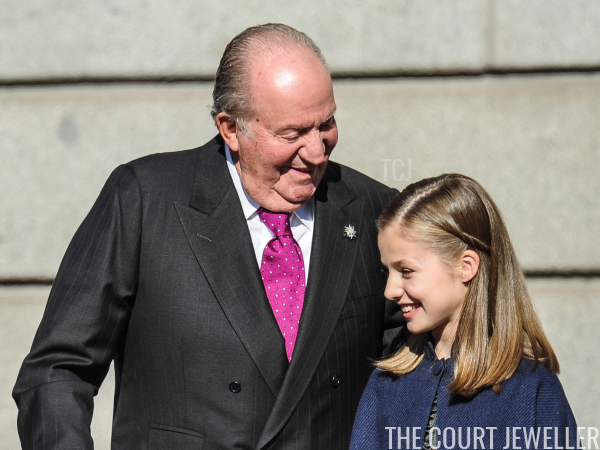 |
| Juan Naharro Gimenez/Getty Images |
The Spanish throne is still one of the more precarious perches in Europe, but this event attempted to underscore the monarchy’s role in creating a democratic society in Spain. The Spanish royal family has itself been somewhat fractured over the past several years, threatened by internal squabbles and domestic turmoil. On Thursday, however, they put forward a united front — surely trying to emphasize the continuity of the monarchy as a central part of Spanish democracy.
